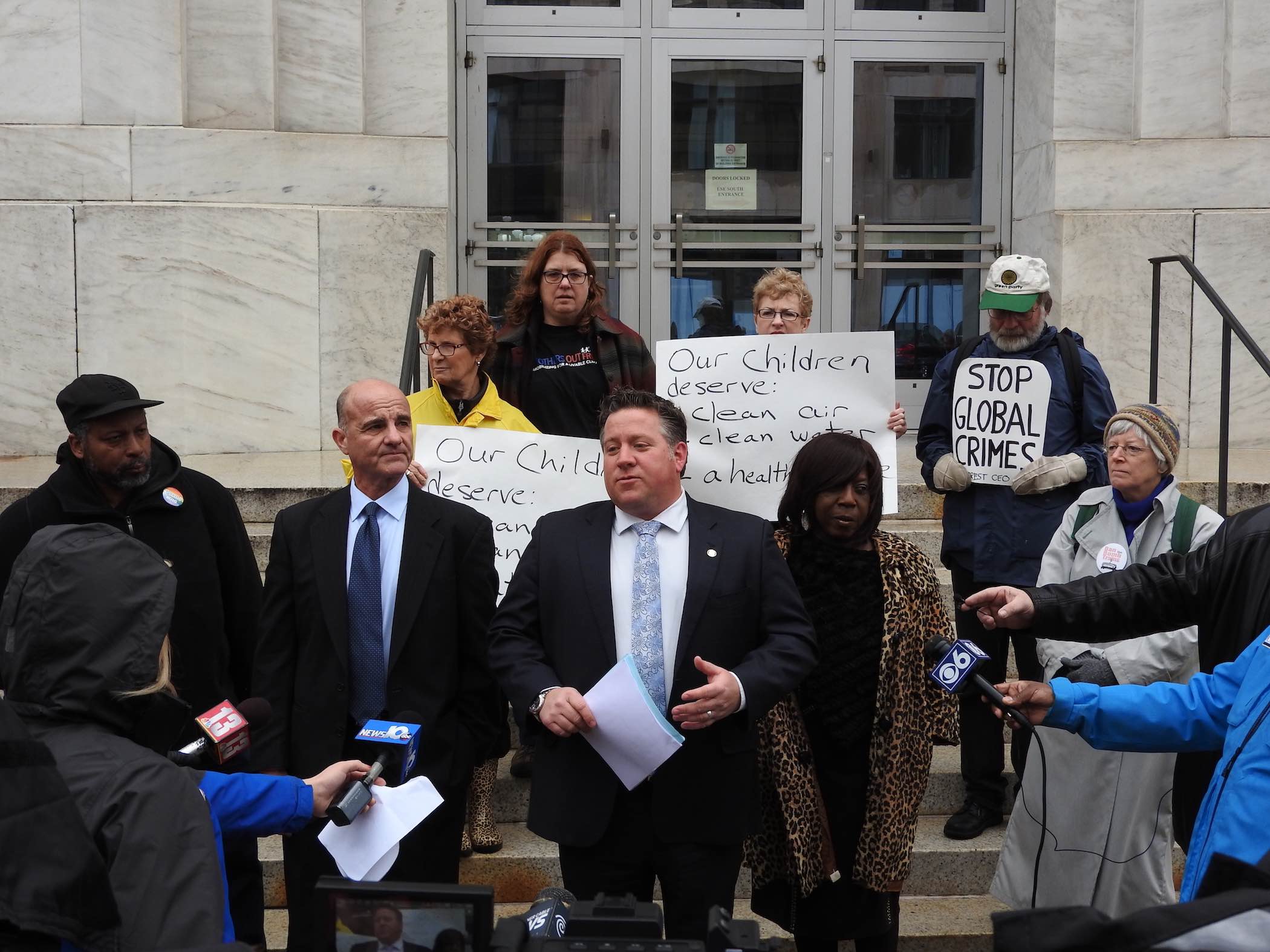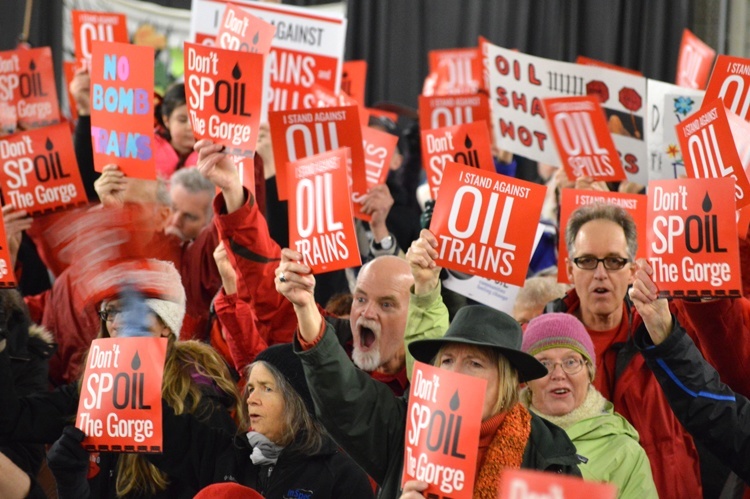The speed and scale with which the oil and rail industries created the North American oil-by-rail infrastructure was impressive. And amazingly under the radar for the most part — until the trains started derailing and blowing up — leading to articles with titles like “The Invisible Bomb Trains.”
In 2014, Terry Wechsler, an environmental attorney in northwest Washington, summed up why there hadn’t been opposition to the initial oil-by-rail terminals on the west coast, telling Reuters, “There was no opposition to the other three proposals only because we weren’t aware they were in formal permitting.”
But now the public knows. And despite public relations efforts by regulators and industry lobbyists, the public also knows that the crude oil “bomb trains” still pose a huge risk to communities along the rail lines.
The National Transportation Safety Board (NTSB) recently released its Top 10 Most Wanted List for 2016, and the list included addressing oil train risks. The Washington Post reported NTSB chairman Christopher Hart’s concerns regarding oil trains.
“We’ve been lucky thus far that derailments involving flammable liquids in America have not yet occurred in a populated area,” Hart said. “But an American version of Lac-Mégantic could happen at any time. Instead of happening out in the middle of a wheat field it could happen in the middle of a big city.”
Nearly three years after Lac-Megantic, the head of the NTSB is saying an accident like that could happen at “any time” in a major American city.
So it is no wonder that efforts to stop new oil-by-rail infrastructure and shut down existing transportation of crude by rail are spreading across the country.
Public Opposition to Bomb Trains Growing
In January, the trial of the Delta 5 activists — who chained themselves to the tracks to stop an oil train in Washington — raised the level of public awareness nationwide, although their test case exploring the viability of the necessity defense to stop oil by rail due to climate risks failed. They were convicted of trespassing, but avoided jail time.
Last week, the Baltimore City Council introduced a bill to study the risks posed by oil trains that pass through Baltimore up to five times a day.
Also last week, in San Luis Obispo County, California a hearing was held to debate the pending application by Phillips 66 for a “Permit to allow the modification of the existing rail spur currently on the southwest side of the Santa Maria Refinery in order to allow for the import/unloading of crude oil at the refinery via train.”
The San Luis Obispo county department of planning made a recommendation to deny the application, a move that was applauded by the editorial board of The Tribune. The Tribune highlighted the “increased risk to public health and safety” along with “a lack of benefits significant enough to outweigh the risks.”
In January, EcoWatch reported that 1,000 people showed up at a hearing to oppose the proposed oil-by-rail facility at the Port of Vancouver.
Last week, a coalition of groups sued an oil-by-rail company in Albany, NY over concerns about air quality violations.

Groups announce lawsuit against oil-by-rail company during press conference in Albany last week. Photo by Justin Mikulka.
In December, the New York Attorney General petitioned federal regulators to address the volatile nature of Bakken crude oil.
This week in Jersey City, New Jersey there will be a public forum on the risks of oil-by-rail.
There is now even a new site spoofing Shell and its proposed oil-by-rail project in Anacortes, Washington.
Lull in Oil By Rail Is No Long-Term Comfort
All of this organized opposition is happening at the same time that oil-by-rail volumes are dropping due to the low price of oil.
But with the lifting of the oil export ban and the eventual return of higher oil prices, oil-by-rail will remain an attractive option for the industry for years to come.
The industry is obviously planning on a future uptick, especially with all of the proposed infrastructure projects on the West Coast.
The industry was able to sneak the first round of oil-by-rail under the radar. Plans to continue to expand the industry will have to be rammed through against widespread public opposition.
In San Luis Obispo, a local resident explained her opposition to the project to The Tribune.
“If this project goes forward, we can never go back and change it. The damage will be done and it will be just a matter of time before an accident happens.”
And if you think she is being alarmist, just remember that the head of the National Transportation Safety Board recently said essentially the same thing.
Blog image credit: Columbia Riverkeeper
Subscribe to our newsletter
Stay up to date with DeSmog news and alerts






